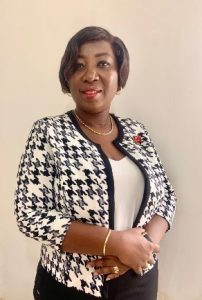Profile Of Juaben Municipal
Juaben Municipal Assembly-carved out of Ejisu-Juaben Municipal Assembly, LI 2296 in 2017 and inaugurated on 15th March, 2018 but started operations in August 2019. The Municipality shares boundaries to the north-east with the Sekyere East and Kwabre East Municipal on the north-west; Ejisu Municipal to the west, Bosomtwe District on the south-west; Asante Akim Central Municipal on the east and the Kumasi Metropolitan Assembly on the north
Main Economuc activity
Agriculture (including crop planting, Tree planting, livestock and fish farming),
Education
(168) schools, (114) public and (54) private schools. Total enrolment of (16,648) students
Sanitation
29 public toilets, that’s 5-water closet, 11 Pit latrine, 14 KVIP. Within the Juaben Municipality, open dumping is the dominant method of solid waste disposal. However, refuse containers are in markets and at refuse dump sites in selected communities.
Electricty
About 69.4 % households depend on electricity grid from the Electricity Company of Ghana for lighting for domestic and commercial use. Also, 16.5% households use flashlight and 11.5 % use kerosene lamp.
Water
The main sources of water are, the Small Water System operates mainly in the Juaben township and Safe Water also operates in Nobewam, Atia, Achiase and New Koforidua and plans on extending its services. There are thirty-eight (38) mechanised boreholes, forty-nine hand pumps (49), four (4) hand dug wells which are actively working within the Municipality.
Road Network
The road network is fairly good with few tarred roads. The rest are mainly feeder roads, some of which are not motorable especially during the rainy season. Some of the communities are extremely hard to reach during the rainy season. All communities within the municipal have Community Based Surveillance Volunteers (CBSVs). The municipal has three (3) sub-municipals namely; Achiase, Bomfa and Juaben
Population
The population of Juaben comprises of Ghanaians (98.9%) and non-Ghanaians (1.1%).
The Akan ethnic group (75.9%) is the largest in the district, followed by Mole-Dagbani (8.2%), Ewe (6.5%), Gurma (3.2%), with the remaining ethnic groups (Mande, Grusi, Ga-Dangme, Guan and Other Tribes) constituting 6.2%. occupies a land size of 364,674 hectors (365 sq. km) with a population density of 51 persons per square kilometre.
Almost eight in ten (82.5%) of the district’s population are affiliated to the Christian Religion and 10% to the Islamic Religion. Less than six percent are either traditionalist (4.1%) or belong to other religions (3.1%). The rest (0.3%) have no religion.
The municipal has a projected population of 66,642 based on 2021 population and housing census with growth rate of 2.1% per annum. Children 0-11months and expected pregnancy forms 4.0% (2,666) of the general population. The municipal has three (3) sub-municipals namely; Achiase, Bomfa and Juaben.
Health Facilties
There are Twelve (12) health facilities. The distribution of the various types of health facilities in the municipal is described in Table 1.1 below.
| TYPE OF FACILITIES | NUMBER [12] |
| Hospital | 1 |
| Health Centers | 5 (2 Government, 1Private, 2CHAG) |
| Government Clinic | 1 |
| Private Maternity Homes | 1 |
| CHAG/Private Clinic | 1 |
| CHPS Zones | 19 |
| Community-based Health Planning & Services (CHPS) Compound | 3 |
| Communities | 46 |



